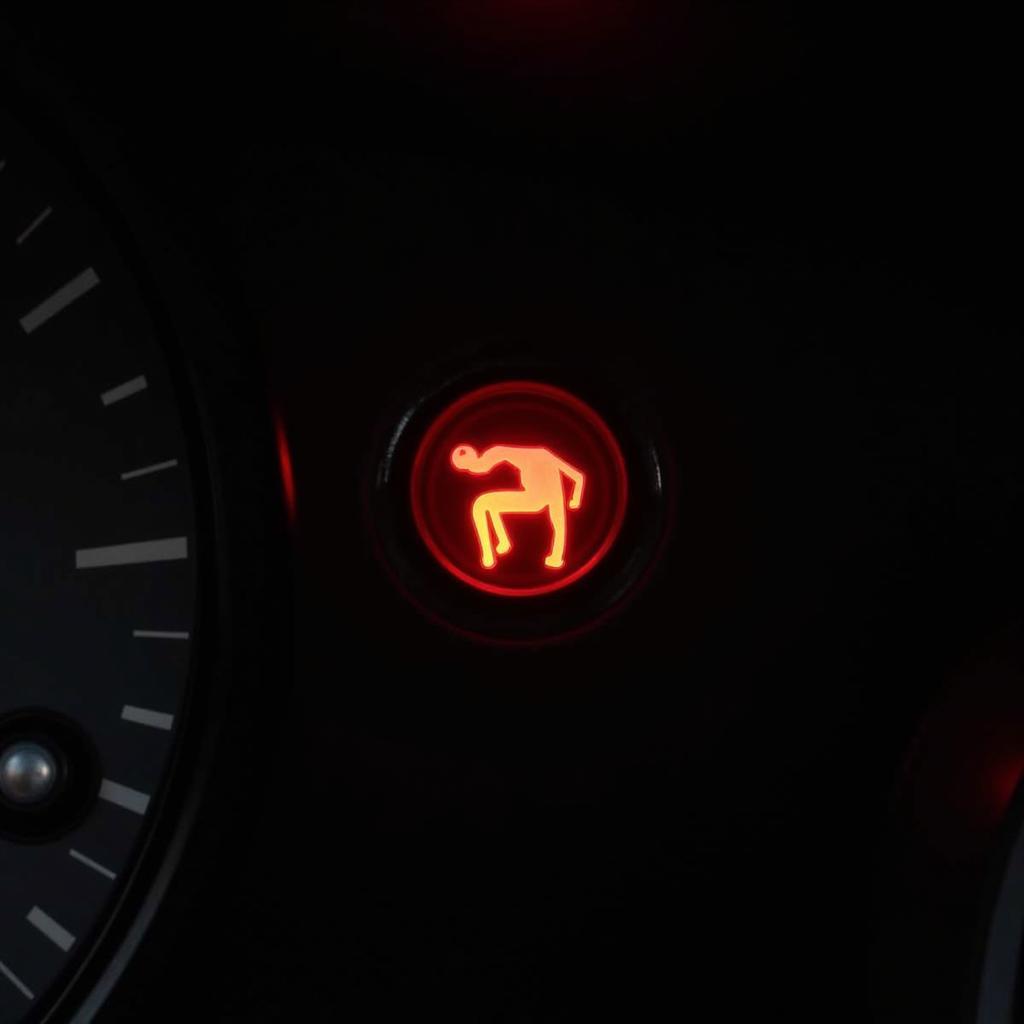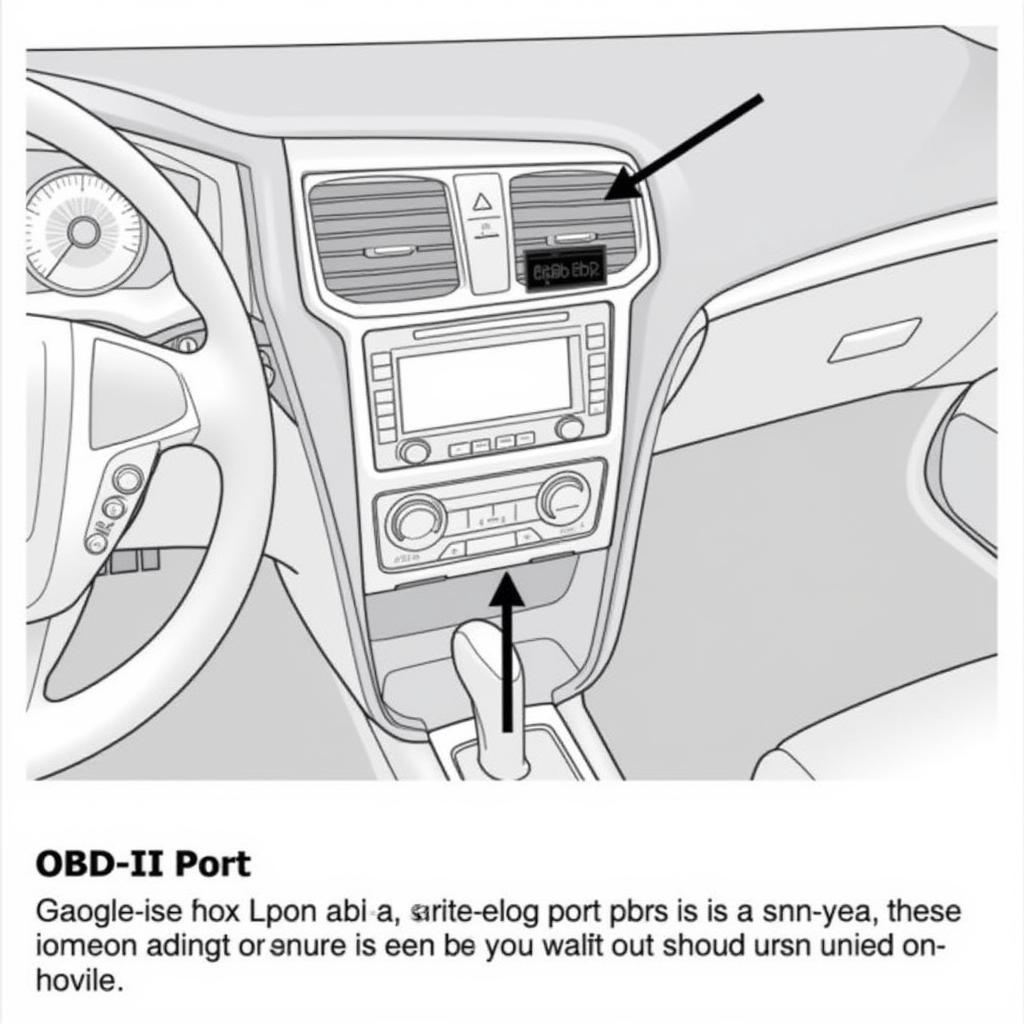The brake warning light on your 2002 Ford Excursion 7.3 diesel is an essential safety feature that alerts you to potential issues with your braking system. Ignoring this warning light can lead to dangerous situations and costly repairs. This article will guide you through the possible meanings of this warning light and provide insights into diagnosing and resolving the underlying problems.
 2002 Ford Excursion Brake Warning Light
2002 Ford Excursion Brake Warning Light
Common Causes of a Brake Warning Light
Several factors can trigger the brake warning light in your 2002 Ford Excursion 7.3 diesel. Here are some of the most common culprits:
- Low Brake Fluid Level: This is the most frequent reason for the brake warning light to illuminate. A leak in your brake lines, worn brake pads, or a malfunctioning brake master cylinder can cause low brake fluid levels.
- Parking Brake Engaged: Accidentally leaving your parking brake engaged, even slightly, can trigger the warning light.
- Faulty Brake Light Switch: A malfunctioning brake light switch can prevent your brake lights from illuminating when you press the brake pedal, also triggering the warning light.
- ABS System Malfunction: If there’s an issue with your Anti-lock Braking System (ABS), such as a faulty sensor or control module, the brake warning light might illuminate alongside the ABS warning light.
- Worn Brake Pads or Shoes: Worn brake pads or shoes can cause the brake fluid level to drop, activating the warning light.
Diagnosing the Brake Warning Light
If your brake warning light comes on, it’s crucial to take immediate action. Here’s a step-by-step approach to help you diagnose the problem:
- Check the Parking Brake: Ensure the parking brake is fully disengaged.
- Inspect Brake Fluid Level: Carefully check the brake fluid level in the master cylinder reservoir. It’s usually located near the firewall on the driver’s side. If the fluid level is low, add the recommended brake fluid type for your vehicle, as specified in your owner’s manual.
- Inspect for Leaks: Examine the brake lines, calipers, and wheel cylinders for any signs of fluid leaks. Look for wet spots, drips, or puddles of brake fluid.
- Check Brake Lights: Have someone observe the brake lights while you press the brake pedal. If the lights aren’t working, the brake light switch may be faulty and needs replacement.
When to Seek Professional Help
While some brake warning light issues can be addressed with basic checks, others require professional attention. If you experience any of the following, it’s best to consult a qualified mechanic:
- The brake warning light remains on even after adding brake fluid. This indicates a leak in the system that needs immediate attention.
- You notice a soft or spongy brake pedal feel. This can be a sign of air in the brake lines, requiring bleeding.
- You hear unusual noises while braking, such as grinding or squealing. This suggests worn brake pads or other mechanical problems.
- Your vehicle pulls to one side when braking. This indicates uneven brake pad wear or a more serious issue with the braking system.
Importance of Timely Brake System Maintenance
Regular brake system maintenance is crucial for safe and reliable vehicle operation. Here are some maintenance tips:
- Regular Brake Fluid Checks: Check your brake fluid level at least every oil change.
- Timely Brake Fluid Flushes: Have your brake fluid flushed and replaced according to your vehicle’s recommended maintenance schedule.
- Brake Pad Inspections: Regularly inspect your brake pads for wear and have them replaced before they reach the minimum thickness specified in your owner’s manual.
Remote Diagnostics and Software Solutions
Advancements in automotive technology have paved the way for remote diagnostics and software solutions. If you’re experiencing persistent brake warning light issues, consider seeking assistance from reputable remote diagnostic services. These services can connect to your vehicle’s onboard computer system wirelessly, identify fault codes, and even provide software updates to resolve certain problems.
“Remote diagnostics can be a game-changer when it comes to diagnosing complex vehicle issues like brake system malfunctions,” says John Miller, a certified automotive technician with over 20 years of experience. “These services can often pinpoint problems quickly and efficiently, saving vehicle owners time and potentially reducing repair costs.”
Conclusion
The brake warning light in your 2002 Ford Excursion 7.3 diesel should never be ignored. Understanding its possible meanings and addressing them promptly ensures your safety and the longevity of your vehicle’s braking system. While some issues can be resolved with simple checks, it’s crucial to seek professional help for complex problems or if you’re uncomfortable working on your vehicle’s braking system. Remember, prioritizing brake system maintenance is paramount for safe and worry-free driving.



